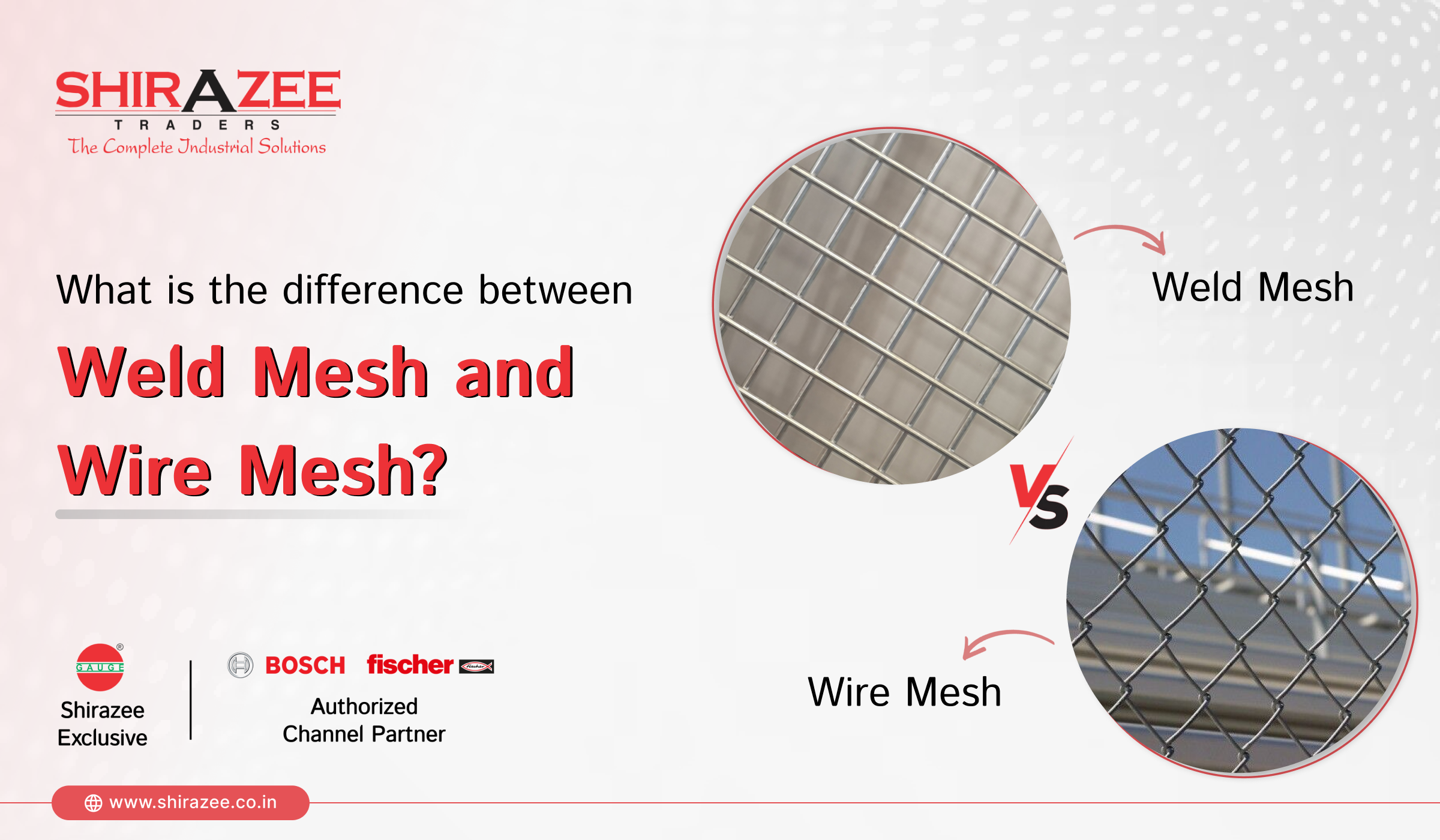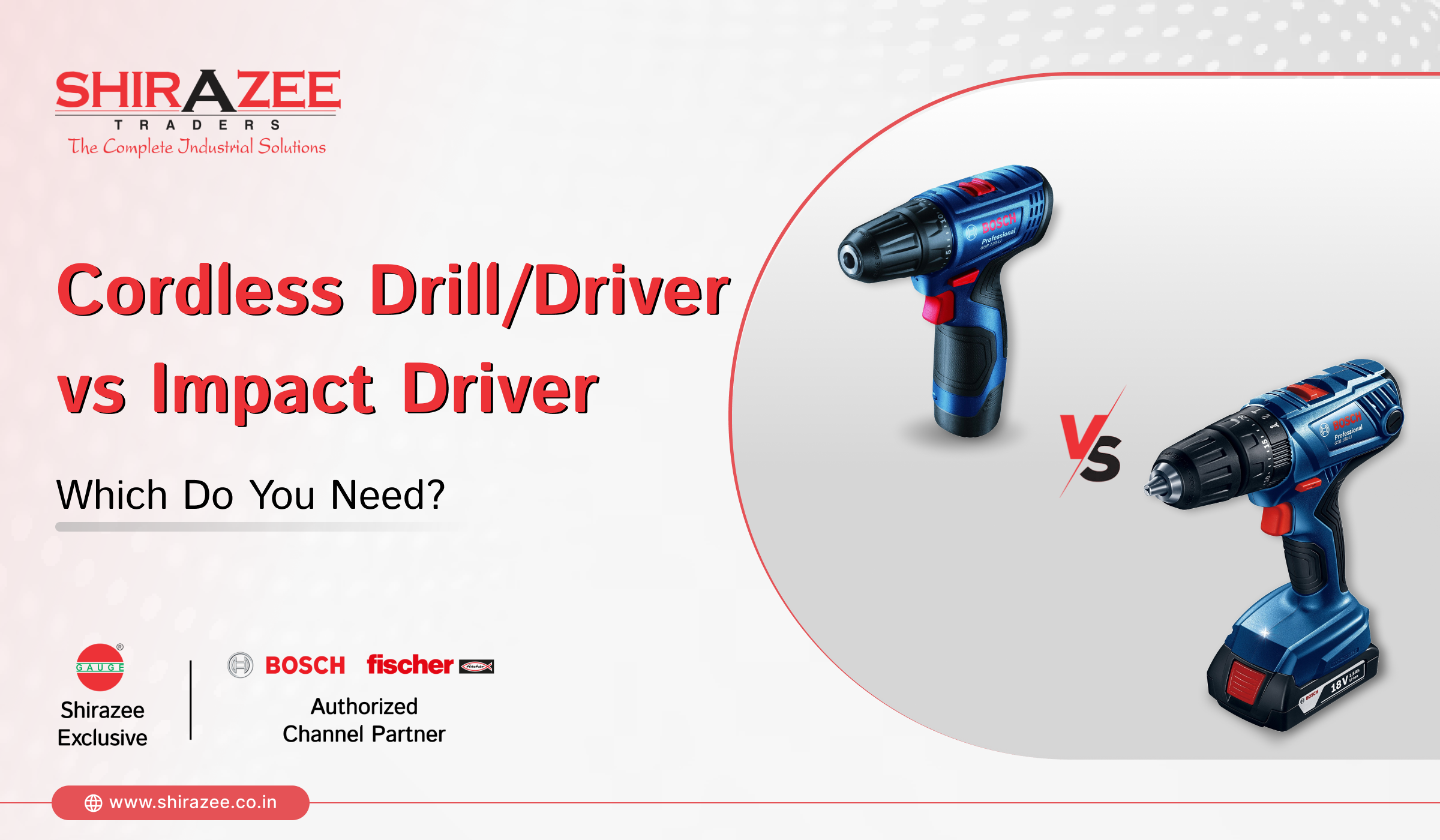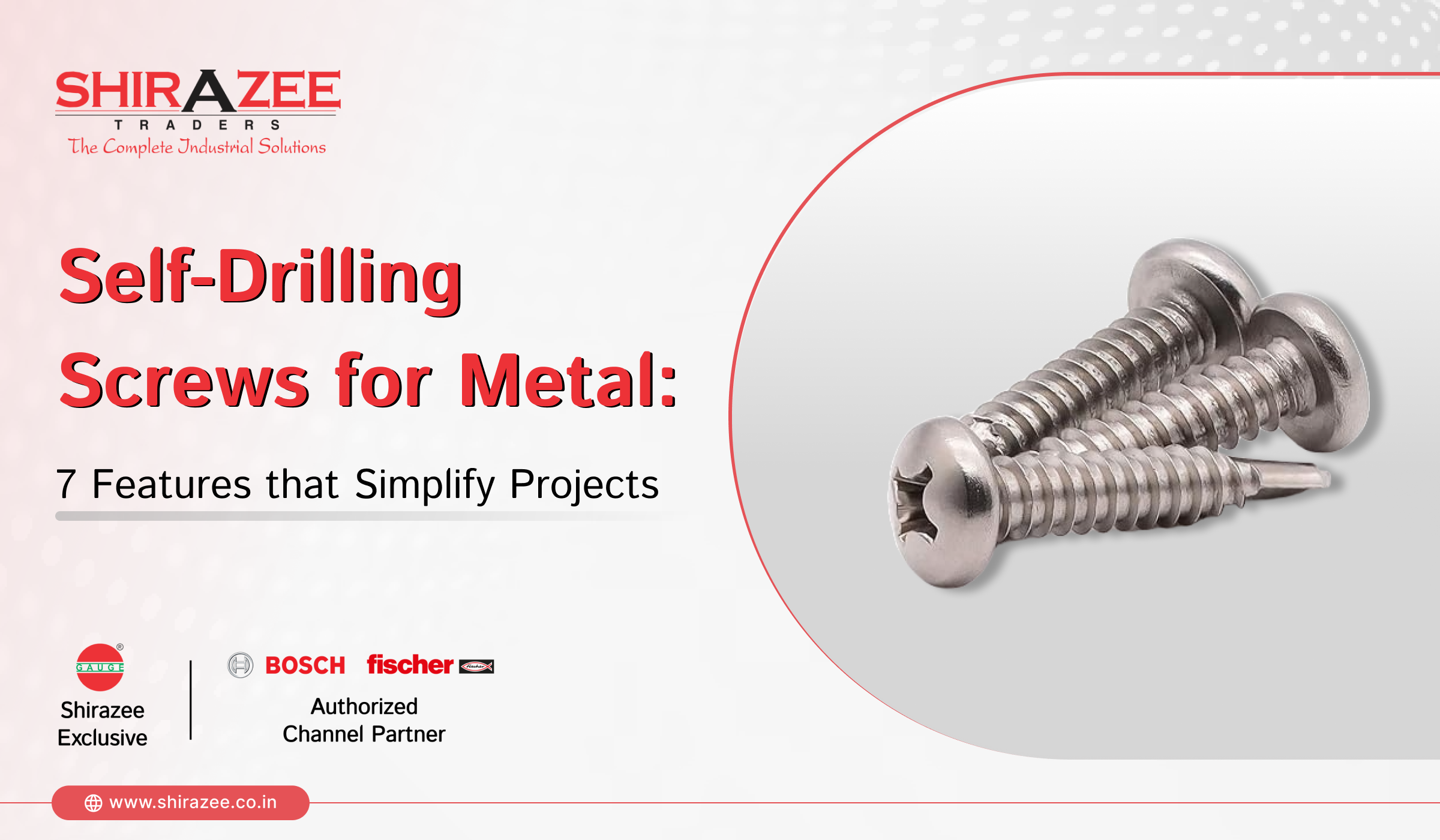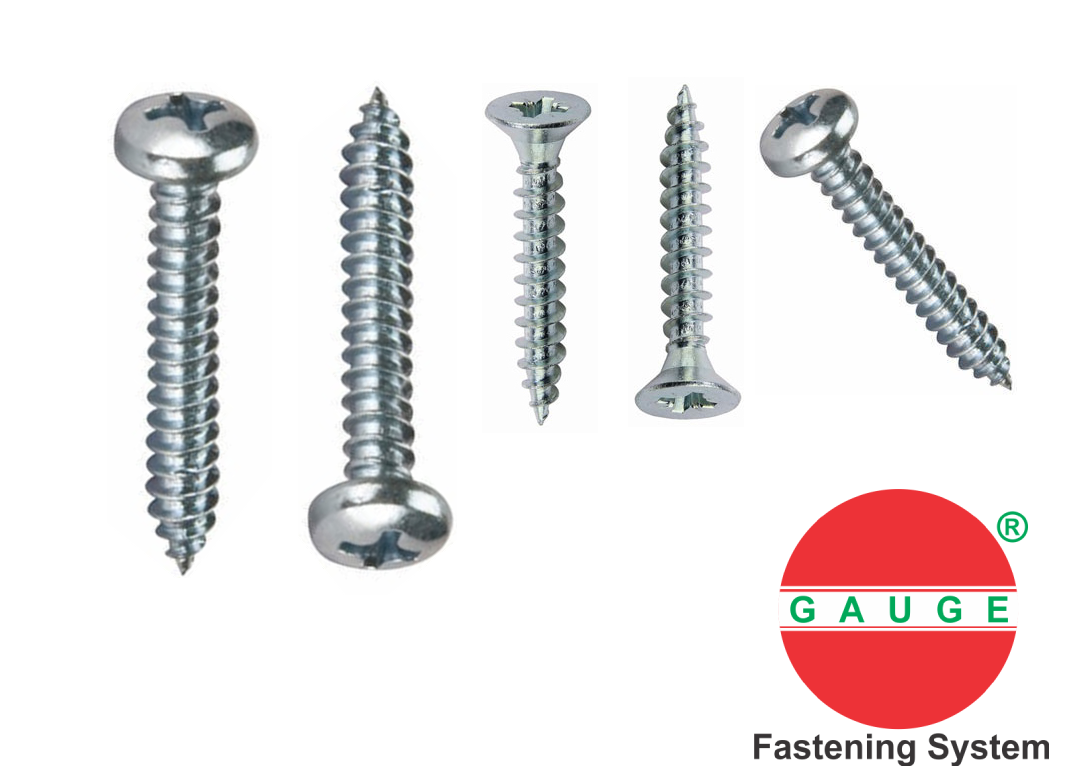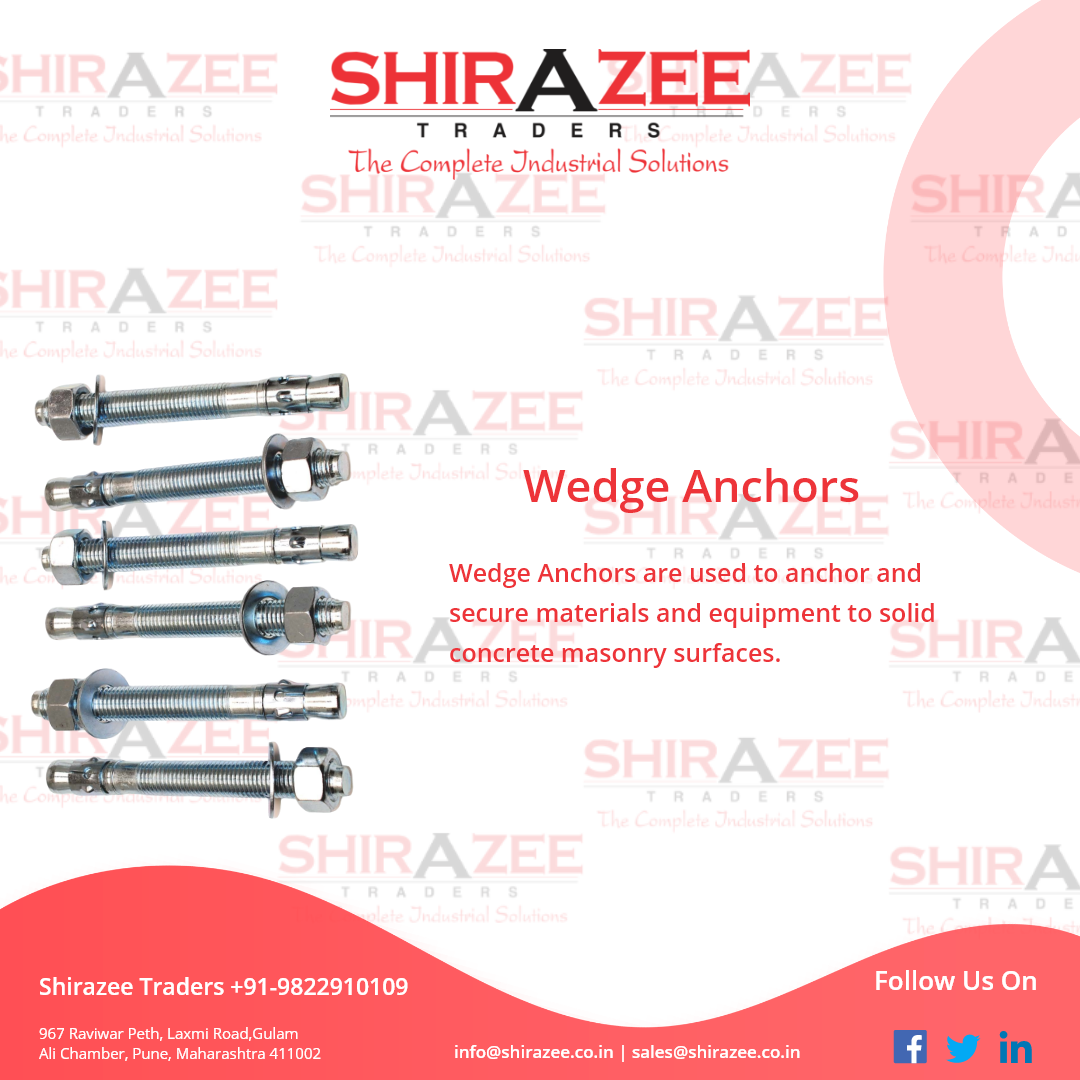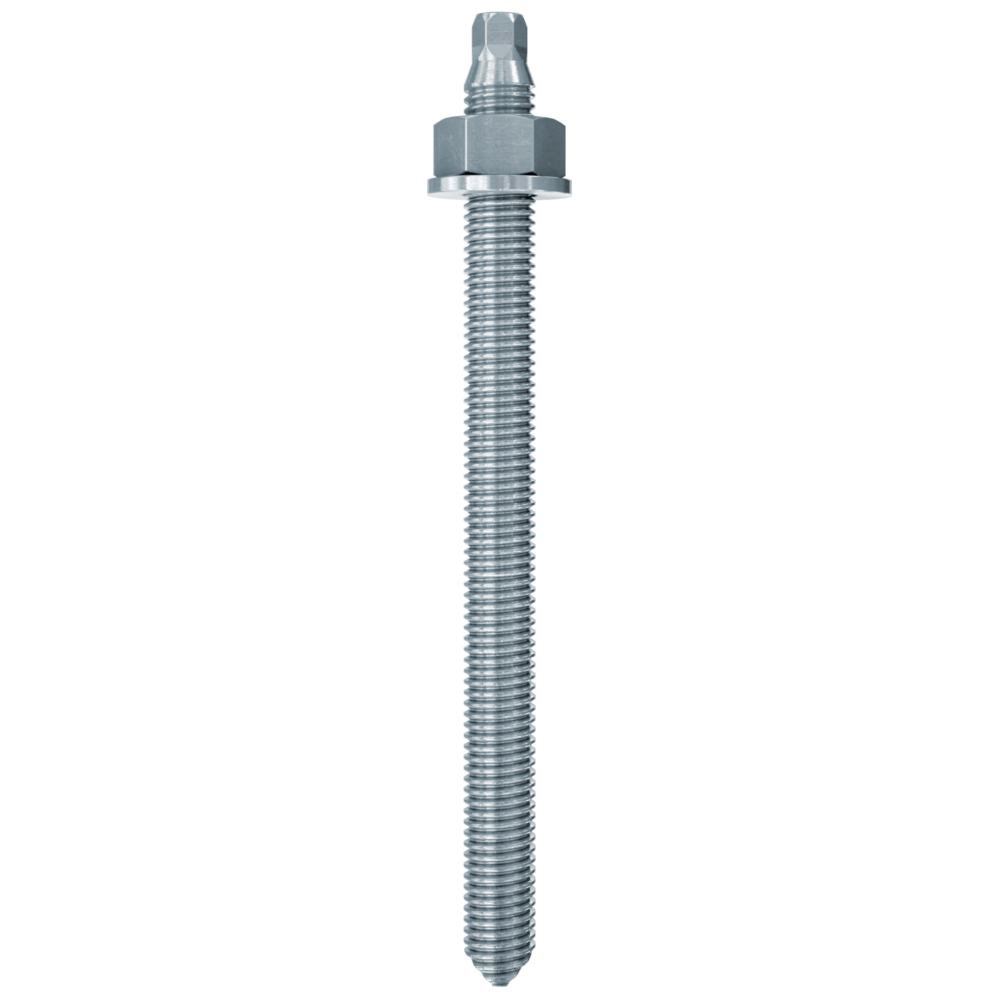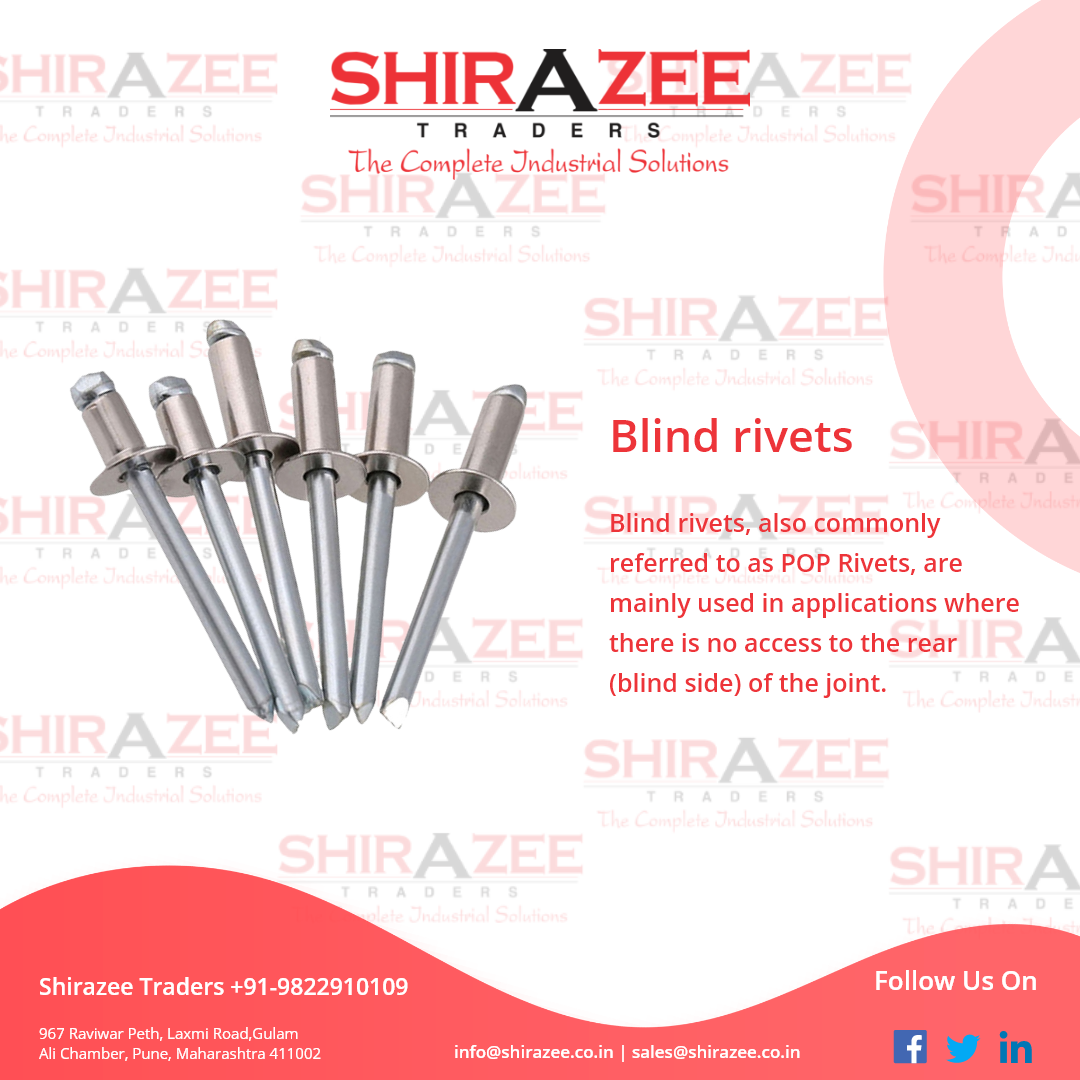
What are Blind Rivets? and Different Types of Blind Rivets
posted in Blind Rivets, Fasteners, Guage, Shirazee Traders by admin
What are Blind Rivets?
Blind rivets, a.k.a. break stem rivets are tubular fasteners with a mandrel through the center. Blind rivets inserted into drilled holes in the parts to be joined, and a special tool is used to draw the mandrel through the body of the rivet. The blind end expands, and the mandrel is snapped off. Unlike solid rivets, blind rivets installed in joints from only one side of the part—making them “blind” to the opposite side.
What are the types of rivets?
-
Standard Blind Rivets
Standard blind rivets usually used to fasten metal to metal. They have domed heads and plain bodies. Pulling the mandrel part-way through the rivet’s body expands the body at its “blind” end, creating a second head to permanently fasten materials together. Standard rivets used in a range of industries including automotive, construction, metals, electrical appliances, containers, furniture, air conditioning, and heating.
-
Sealed Blind Rivets
This type of blind rivet comes with a sealed end. The mandrel head does not protrude from the end of the rivet like the other types of blind rivets – it is contained within the sealed body. Sealed rivets do not allow liquids to get in or out and are designed to fasten metal to metal. The head of the mandrel sits inside the body of the rivet while the head of the rivet is sealed. This prevents any liquid from getting in or out of the component. They are suitable for use in the automotive, construction, and metal industries. They can also be used in electrical appliances, containers, furniture, and air conditioning and heating systems.
-
Peeled Blind Rivets
Peeled rivets provide a locking head with a larger diameter, providing them with a greater bearing surface (underside of head). As the mandrel is drawn through, the body expands, leaving ahead in the shape of a flower with four petals. This type of rivet is best suited to fastening metal to softer materials. The sides (petals) of the rivet fold over, creating a head to fasten the materials together. Peeled rivets are ideal for use in the automotive industry, construction work (plasterboard, coatings, and insulation) and can be used on trailers, plastic components, electrical appliances, and upholstery (padded covering on furniture).
-
Grooved Blind Rivets
This type of rivet comes with grooves around the body which provide the rivet with excellent gripping power when installing softer materials such as plastic and wood. Grooved rivets are perfect for fastening metal to wood and metal to construction materials such as cement, bricks, and wood. The grooves located on the body of the rivet embed into and hold the material together almost like a screw. The hole goes into doesn’t have to be right through the material.
The tail of a grooved rivet expands inside the material when the mandrel is pulled out, rather than a new head being formed on the other side of the material. So the rivet grips the material with friction, not a second head, while the head at the other end grips the object that is being joined to the material. Grooved rivets are best suited for use in construction, the metal industry and furniture manufacturing, and in electrical equipment and injection-molded components.
-
Multi-Grip Blind Rivets
Multi-grip rivets are similar to standard rivets but have indents located on the rivet body. The indents expand and provide multiple grips when the mandrel is pulled through the body. These rivets are for fastening metal to plastic and plastic to plastic. The multiple grips on the body of the rivet are forced against the material being riveted as the mandrel is pulled through. Multi-grip rivets are suitable for use in the automotive, construction and metal industries, and in electrical appliances, furniture, electronics, ladder manufacturing, and air conditioning and heating.
-
Soft Set Blind Rivets
Soft rivets are identical to standard rivets. However, the body and mandrel are manufactured from a softer metal, which tends to be an aluminium alloy. The mandrel breaks off with much less force than other types of the rivet so it applies the right amount of pressure to fasten brittle materials without them becoming damaged. These rivets are for use when fastening metal to plastic, metal to wood, metal to fiberglass, plastic to plastic and metal, or plastic to soft materials with low resistance. The soft rivets can be used in furniture, packaging, plastic components, containers, plastic, and construction work.

